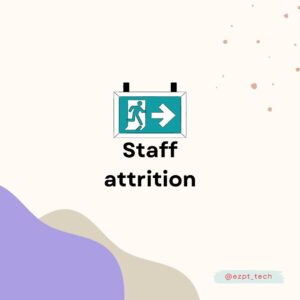Share via:
Introduction
Physical therapists face numerous challenges in their daily practice. These challenges range from financial burdens to patient retention issues and changing legislation. Understanding and addressing these challenges is crucial for the continued success and growth of physical therapy practices. Here, we delve into the key obstacles physical therapists encounter and explore potential solutions.
Reimbursement Cuts

One of the most pressing challenges for physical therapists is the ongoing issue of reimbursement cuts. The Centers for Medicare & Medicaid Services (CMS) have consistently announced plans for deep cuts to specialty services, including physical therapy. These cuts impact the financial stability of clinics and practitioners, making it difficult to sustain operations and invest in quality care. Allied healthcare often gets the short end of the stick in negotiating insurance contracts. Consistent reimbursement cuts not only devalue the profession, but also exacerbate financial strain for providers, particularly considering the average debt of over $150k (excluding mortgage) for graduates.
Educational Costs and Mounting Debts

Becoming a physical therapist is a rewarding journey, but it comes with significant financial burdens. The American Physical Therapy Association (APTA) reports that over 90% of physical therapy graduates have debt exceeding $153,000. The situation is worsened by Physical Therapy graduates often commencing their careers with lower salaries compared to other healthcare professionals, despite completing at least six years of college. This substantial debt load can be daunting for new graduates as they embark on their careers. Finding ways to manage and mitigate these educational costs is essential for the profession’s future.
Patient Buy-in, Recovery, and Retention

Building trust with patients and ensuring their commitment to the therapy process is another critical challenge. It’s not just about getting patients through the door; it’s about achieving results and keeping them engaged. Studies show that physical therapy dropout rates range from 3.8% to 40%, with no-show rates at least 10%. In an era of convenience, it’s often easier for patients to pop a painkiller than undertake the hard work of physical rehab, where incremental progress may go unnoticed. Implementing strategies to improve patient buy-in and retention can lead to better outcomes and more successful practices.
Physical and Mental Exertion

Working with individuals in pain and suffering can take a toll on both the body and mind. Physical therapists often experience high levels of physical and mental exertion, which can lead to burnout and reduced effectiveness. Addressing these issues through proper self-care, support systems, and manageable workloads is vital for maintaining therapist well-being.
Overlapping Patients and Documentation

Many physical therapists treat multiple patients simultaneously, often handling 2 to 3 patients at a time. Additionally, therapists frequently work unpaid during breaks and after hours to meet the legal requirements of documentation. This practice can lead to stress and fatigue. Nearly 90% therapists agree that administrative tasks like documentation contribute significantly to their burnout. Streamlining documentation processes and optimizing patient scheduling can help alleviate some of these pressures. Using advanced AI documentation software like ezPT reduces the charting workload for PTs, allowing them to spend more time with patients and their own wellbeing.
Changing Legislation and Billing Guidelines

Staying up-to-date with constantly evolving regulations and billing guidelines is a significant challenge for physical therapists. Changes in Electronic Health Records (EHRs), ICD-10 codes, and reimbursement schedules demand adaptability and continuous learning. Ensuring compliance requires dedicated time and resources, which can be challenging for busy practitioners.
Continuing Education

In an ever-evolving field, staying ahead requires a commitment to lifelong learning. Physical therapists must regularly update their knowledge and skills through continuing education. Balancing the demands of ongoing education with clinical practice can be challenging, but it is essential for providing high-quality care.
Business Skills and Acumen

Running a clinic involves more than just treating patients; it also requires business skills and acumen. Physical therapists need to balance the books, market their services, and ensure financial viability. Developing strong business management skills is crucial for the success and sustainability of a physical therapy practice.
Staff Attrition

The COVID-19 pandemic has significantly impacted the workforce, with nearly 3 million women dropping out of the workforce in the US. For a profession that comprises nearly 50% women, this poses a serious challenge of a future talent shortage. Addressing staff attrition and ensuring a steady pipeline of qualified professionals is essential for the continued growth of the field.
Solutions and Strategies
Despite these challenges, physical therapists continue to make a positive impact on the lives of their patients and communities. To overcome these obstacles, practitioners can implement several strategies:
Enhancing Financial Stability
To combat reimbursement cuts, physical therapists can explore alternative revenue streams and advocate for better reimbursement policies. Engaging with professional organizations and staying informed about legislative changes can also help practitioners navigate financial challenges.
Managing Educational Costs
Addressing educational costs and debt requires a multifaceted approach. Scholarships, loan forgiveness programs, and financial planning resources can help new graduates manage their debt more effectively. Additionally, advocating for lower tuition costs and more affordable education options can benefit future physical therapists.
Improving Patient Engagement
To improve patient buy-in and retention, therapists can focus on building strong relationships and demonstrating the value of therapy. Personalized treatment plans, regular progress updates, and clear communication can enhance patient engagement and outcomes.
Supporting Therapist Well-being
Promoting physical and mental well-being among therapists is crucial for preventing burnout. Implementing regular breaks, offering mental health resources, and fostering a supportive work environment can help therapists manage the physical and mental demands of their profession.
Streamlining Documentation
Optimizing documentation processes can reduce the burden on physical therapists. Utilizing efficient EHR systems and AI documentation software like ezPT, delegating administrative tasks, and implementing standardized documentation protocols can save time and reduce stress.
Adapting to Legislative Changes
Staying informed about legislative changes and proactively adapting to new regulations is essential. Regular training sessions, continuing education courses, and professional development opportunities can help therapists stay compliant and up-to-date.
Fostering Lifelong Learning
Encouraging a culture of continuous learning within physical therapy practices can enhance knowledge and skills. Providing access to educational resources, supporting attendance at conferences, and promoting mentorship programs can facilitate ongoing professional development.
Strengthening Business Skills
Developing strong business skills is crucial for running a successful physical therapy practice. Offering training in financial management, marketing, and practice management can empower therapists to effectively manage their clinics.
Addressing Staff Attrition
To address staff attrition, physical therapy practices can implement flexible work arrangements, support work-life balance, and provide career development opportunities. Creating a positive and inclusive work environment can attract and retain talented professionals.
Conclusion
Physical therapists face a unique set of challenges in their daily practice. By understanding these obstacles and implementing effective strategies, therapists can overcome these challenges and continue to provide high-quality care. The resilience and dedication of physical therapists make a significant positive impact on the lives of their patients and communities. What keeps you going? Reach out or share your thoughts and experiences!
 Founder & CEO at ezPT
Founder & CEO at ezPT
Share via: